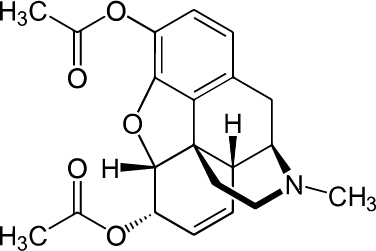Heroin is a powerful drug. It impacts every aspect of an individual’s life once they have become addicted, and with the extremely addictive qualities of heroin it typically becomes a danger very quickly.
Heroin addicts will experience a high that brings a warming sense of calm that can last for hours. It temporarily blocks all physical and emotional pain, which is one of the reasons it is so addictive.
However, once the high has worn off, withdrawal begins. This is a very painful process that results in intense flu-like symptoms that can last up to a week. Heroin withdrawal isn’t deadly, but it is so intensely painful that individuals often return to the drug before they are totally clean.
This is why treatment-supported withdrawal with both medicinal and emotional support gives the user the best chance of being physically rid of the drug.
Heroin addiction has become an epidemic in the United States and was responsible for 72,000 overdose-related deaths in 2017 alone.
Heroin, morphine and prescription opioids are in the same family of drugs because they are each derived from the poppy seed. They share many common characteristics, effects and symptoms and are all highly addictive. For the sake of simplicity, we refer to heroin addiction but it could also apply to morphine and prescription painkillers as well.
Each form of heroin is used to produce feelings of euphoria and peace. This false sense of happiness has made heroin (and other opioids such as prescription painkillers) popular in a wide range of individuals.
Many people become addicted through legitimate prescriptions given by a doctor and then eventually turn to heroin because it can be less expensive and easier to obtain. Others fall prey to its extremely addictive qualities through illegal and more dangerous means. Heroin addiction is a major problem but also one that is absolutely treatable regardless of how it starts.
Addiction is a disease and like all diseases it has its symptoms and side-effects. It will continue to become worse if it is left untreated because it is a progressive illness and like many diseases addiction is potentially fatal. It is chronic and there is no known cure — but it is manageable through treatment and recovery programs.
Most individuals who turn to heroin are addicted very quickly. It may take longer for those who started with prescription painkillers to recognize the addiction though because they originally receive the drug from perfectly legal and trusted sources. However, once an individual has become addicted to heroin (or any opioids) certain symptoms will be present.
Heroin is an illegal drug that is highly addictive. The substance is made from morphine which is a natural product of the opium poppy plant. The morphine is then further chemically modified to become heroin. Despite its deserved negative reputation for its high risks, heroin continues to be a commonly abused drug in the US.

If you recognize these behaviors and symptoms in yourself and others it is time to consider heroin addiction recovery treatment. There is so much involved in treating heroin addiction it is important to consider a program that will address every aspect of an individual.
Heroin addiction is becoming more and more of an issue, and consequently more researched and discussed. Please keep in mind that while these statistics are serious, there are ways to combat this addiction.
There is no shame in seeking help for heroin addiction. However, because it is a matter of “rewiring” the brain, very specific steps must be taken to facilitate treatment.
Reflections Recovery Center has several programs and treatment plans to help with this rewiring, with the goal of giving each individual their best chance at a life of recovery. They include:
Heroin addiction can be treated through these programs. There is not a cure, but there are many options available to individuals who sincerely want to change and improve their lifestyles.
Reflections Recovery is committed to providing emotional, mental, physical, spiritual and social support. It is a comprehensive program where the disease of addiction is treated. Clients are cared for with dignity and respect in an environment that has proven to be successful in treating addiction.
If you have any questions about which treatment program is right for you, please call us at 801-784-9455.


Reflections Recovery Center is a residential drug treatment program located in beautiful Utah valley. Our programs vary from to 30-90 days, depending on each client’s particular needs.


At Reflections we understand that determining how the cost of treatment for you or a loved one will be covered can be a daunting and confusing task.